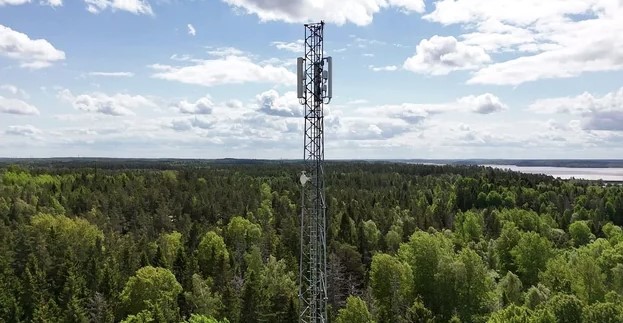During the Easter weekend, something unusual started happening along the E22 highway on Sweden’s east coast. Someone – or a group – began sabotaging important technical equipment.
Multiple Sites Targeted – Nothing Stolen but Much Destroyed
But unlike ordinary break-ins, nothing was stolen. Instead, cables were cut, fuses destroyed, and systems damaged.
The Swedish Post and Telecom Authority (PTS) began receiving several reports of sabotage along the E22 highway. According to Roger Gustafsson, Head of Security at PTS, this wasn’t normal. Technical equipment was being damaged at multiple sites within a limited geographic area near E22. This pattern made the incidents stand out and raised concerns about the safety of infrastructure in the E22 corridor.
What made the sabotage especially strange was that it didn’t seem aimed at theft. The goal appeared to be disruption. In some areas, mobile networks stopped working. Although the attacks didn’t lead to major public outages, authorities treated the situation with great seriousness.
At times, PTS even organized a crisis team to monitor and respond to the reports. This type of coordinated action from a government agency shows how unusual and concerning the events were.
Same Attacker Suspected – Focus Along the E22 Highway
According to an investigation by SVT (Swedish public broadcaster), police believe that most of the attacks may be linked to a single group or person. One major clue is that nearly all the sabotage incidents happened close to the E22 highway, which runs through regions like Småland and Östergötland along the east coast.
Sweden Flexes Airpower as Gripen Jets Join NATO Patrols During Russian Escalation
The investigation is being led by prosecutor Michelle Stein. She says there are some signs pointing to a connection between the cases, but only the ongoing police investigation will confirm whether they are related.
The case is being handled by the serious crimes unit in Kalmar. They’ve been given the task of coordinating all the related incidents in the surrounding regions. Håkan Wessung, the unit’s head, says that their work involves collecting and analyzing a large amount of information – both technical data and witness statements.
Neither the police nor the prosecutor has offered any explanation for a possible motive. They are keeping all possibilities open. The Swedish Security Service (Säkerhetspolisen) also confirmed to SVT that they are closely following the investigation, though they declined to comment further.
Wessung added that at this stage, nothing is being ruled out, and all theories are still on the table.
Terrific Show of Force: Sweden Deploys to Latvia, Strengthening NATO’s Eastern Flank
Sharp Rise in Attacks on Critical Infrastructure
The E22 sabotage cases are not isolated. They form part of a larger, troubling trend. Attacks on critical infrastructure in Sweden have sharply increased over the past year.
Teracom – the state-owned company responsible for communication masts across the country – has reported a noticeable rise in incidents. These masts are used to transmit essential services like radio and television, as well as emergency communications.
Stefan Steijnick, Teracom’s Head of Security, says that some of these reported cases might be tied to intelligence gathering or sabotage. He explains that such acts could be attempts to test Sweden’s capabilities, observe how authorities respond, and gather information on how quickly and effectively systems can be disrupted.
In other words, someone could be watching to see how Sweden handles these situations – not to cause immediate damage, but perhaps to collect valuable insights for future use.
Teracom has submitted multiple reports to the authorities, noting that these incidents may not be simple vandalism. Some may be deliberate actions aimed at probing the country’s readiness and resilience.
All this suggests that the sabotage events along the E22 are part of something bigger. Multiple government bodies – including PTS, local police, prosecutors, and national security services – are now involved in trying to understand and stop these attacks.
Although there have been no large-scale service outages, the damage has been enough to cause serious concern. The fact that nothing was stolen but systems were targeted shows how vulnerable parts of society can be when it comes to technical infrastructure.
These events are being treated as significant threats. Authorities are working intensively to figure out who is behind them – and why.

